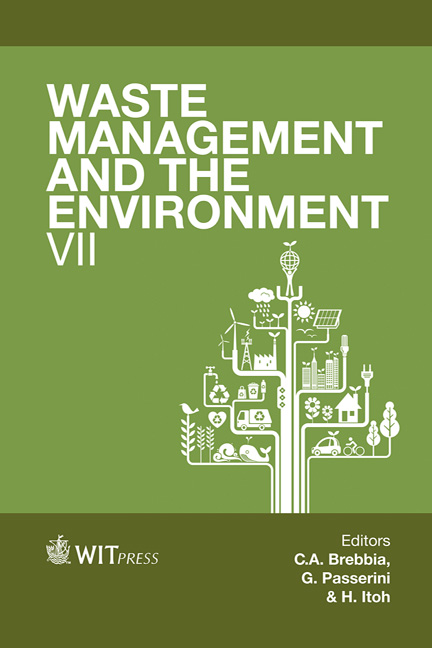Adsorption For Environmental Remediation: The Use Of Activated Carbon As A By-product From A Biomass Gasification Plant Compared With Commercial Activated Carbon
Price
Free (open access)
Transaction
Volume
180
Pages
8
Published
2014
Size
465 kb
Paper DOI
10.2495/WM140281
Copyright
WIT Press
Author(s)
A. S. Oliveira, C. M. Cardoso, C. G. Maia & P. Brito
Abstract
Activated carbon is a well known amorphous adsorbent for hydrophobic pollutants, having the ability to take in its porous structure molecules of very different sizes. Portalegre Polytechnic Institute has a pilot plant for biomass gasification for syngas production, the residues of which need remediation. The syngas production process produces tar rich liquid condensates and powdered carbon as main residues. The powdered carbon is in fact activated carbon once it results from partial combustion at high temperatures and so it can be used as an adsorbent for pollutant removal from any effluent. Condensates resulting from gasification are coloured and strongly odoured residues; rich in hydrocarbon contaminants usually known as tars. In this work, powdered carbon residue was used to adsorb the contaminants present in the condensate residue produced in the process. The adsorption process was shown to be highly efficient in the removal of odour and colour from gasification condensates and the results were not very much different from the ones obtained for commercial activated carbon. After being used for adsorption, the carbon residue can be reburned in the gasification plant (which also needs coal for the heating start up procedure) to promote a final destruction process of the adsorbed contaminants with production of freshly activated carbon. Keywords: activated carbon, adsorption, biomass gasification, tars, condensates, remediation of biomass residues.
Keywords
activated carbon, adsorption, biomass gasification, tars, condensates, remediation of biomass residues.





